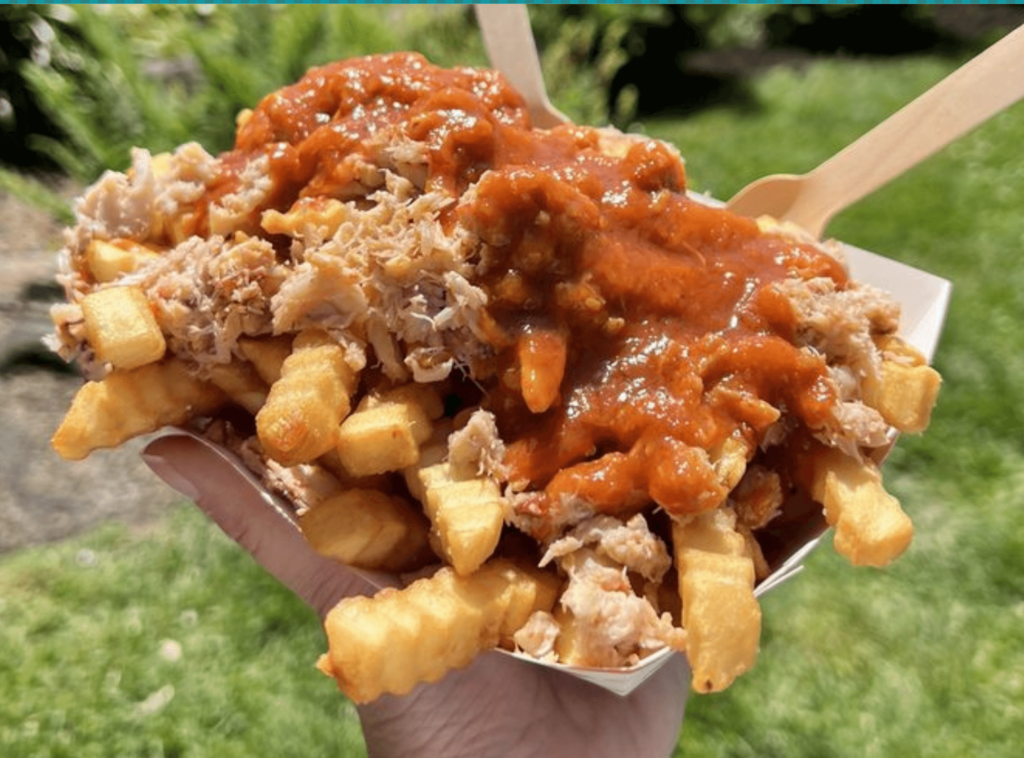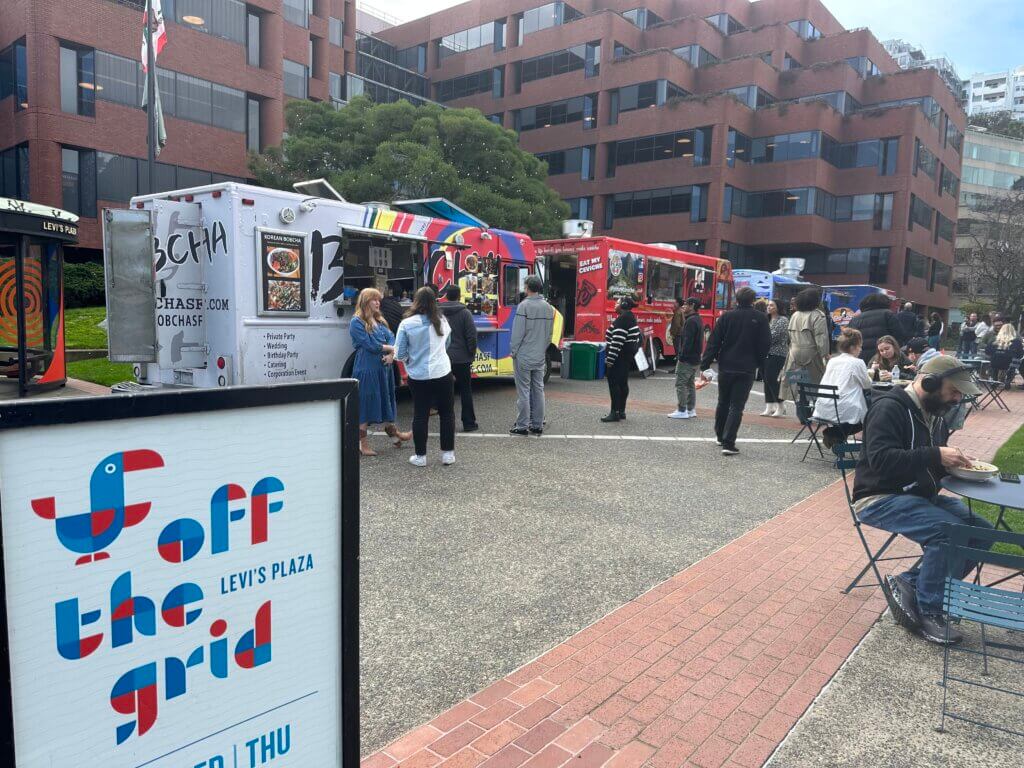
Off the Grid is all about bringing people together. The spirit of community that our guests experience at our markets is the same energy we aim to build within our company. However, unbeknownst to many, the nature of Off the Grid requires us to have a large number of facilities scattered across the Bay Area with folks running markets, cooking food, selling our catering services, and marketing our events. With many warehouses, kitchens, offices, and manufacturing facilities spread out across the Bay, we have become accustomed to working together even when apart, and the main tool that connects us is Slack.
Text-based tools like Slack can seem impersonal and antithetical to building community in a company, but used well, Slack can be a powerful agent for connecting people whether they’re scattered across multiple offices, living rooms, or cities. We’d like to share a few lessons we’ve learned over the years in connecting folks over Slack, with the hope that it may help you in building community within your own organization.

A lot of companies worry about a proliferation of channels in Slack. However in our experience, having multiple, focused channels is much better for keeping conversations clear and focused than the alternative—having a few channels with too many topics and threads. A couple of years back Slack introduced threads to handle forking conversations, and while they can be beneficial for small topic diversions, they’re not great for long-lived topics.
Having a variety of focused channels ensures that people are not being subjected to conversations they aren’t interested in or related to; if the topic is generally not interesting to them they can easily leave. Using focused channels can also help keep important information out of group messages which are not easily searchable by other people.
In my personal experience, it’s best to default to using public channels whenever possible. Obviously there are times where sensitive information needs to be conveyed and privacy is critical, but part of the power of Slack is its ability to organically provide an archive of interesting conversations and decisions in an easily searchable place. Public channels allow people to browse and see interesting topics that are being discussed, and empowers people to discover information on their own.

The flipside of not being afraid to create channels is the importance of archiving channels on a regular basis. Archived channels will appear in searches if folks are looking for older information, but by cleaning them regularly you’ll be able to see clearly what topics are hot.
Archiving regularly also helps people keep their own channel lists from feeling overwhelming; a lot of users feel uncomfortable leaving a channel even if the topic is no longer relevant, fearing they might miss out on something important. Frequent archiving helps with the FOMO.
A good practice for keeping your channels organized is to state what the archiving conditions will be when creating it. Frequently I will create a channel just for managing a software release or a short research spike and explicitly state when creating the channel what the archive criteria will be. This sets expectations and helps people feel like they aren’t being sucked into yet another Slack channel.

When folks work in an office they spend a non-trivial amount of time casually socializing, whether it’s chatting in the kitchen grabbing coffee or talking about the last Tiger King episode while waiting for a meeting to start. People can have a hard time bringing that sort of casual conversation to Slack for fear of management seeing it as a sign of slacking off, and a feeling that everyone is watching. However, this sort of communication is critical for building relationships, and for many of us is a key ingredient in making work fun.
At Off the Grid we have a number of channels for different non-work topics, and folks from across the organization post in them. In the #madeathome channel, everyone shares pictures of their latest culinary masterpieces. It’s a wonderful way to learn about food from a ton of different cultures and to see the amazing talent we have at OTG. We have a bevy of talented chefs on our in-house Culinary team, but everyone has something interesting to share and contribute. Most recently, we’ve all been posting pictures of our lunches and coffee-making setups.
Music is a key component of a good event and has always been a big part of OTG culture. In the channel #turnip_da_beets folks share playlists they are jamming to or favorite songs for the day. We’ll even build a community playlist by sharing songs with the channel and then we can all jam out to the same music. There are folks who I have never worked with directly, but I love their taste in music and look forward to getting their recommendations.
At a previous company, we had a channel where we shared our weekend projects whether they were building furniture, crafts with kids, or good food. It was wonderful to see people’s creative sides and get a peek inside their day to day lives. Much of my last four years has been spent working remotely, and in my experience having a channel where people can share a little bit of themselves is critical for creating a fun and safe environment that allows people to make meaningful connections with their colleagues. You never know who might share your interests!
One critical aspect of having these community-building channels is to have company leaders participate, to show that it’s alright (and even encouraged) for others to participate. At the same time, it’s important that leaders not fill the space or take over. Our Director of Culinary Innovation, Stephanie Faro-Kuo, does a wonderful job of sparking interesting conversations in the company and being a catalyst for others to share. The recent lunchtime meal photos were her idea and she does a great job of encouraging others to participate without being overwhelming.
Building community and connections are difficult in the best of circumstances, and in these challenging times helping to create opportunities to connect is even more important. For companies that rely heavily on in-person communication and on being in the same space, being scattered all of a sudden is a huge battle. Embracing these three tips will help build some of those connections by making sure the right people are in the right conversations at the right time, giving everyone a chance to reach out and get to know each other.
Authored By: Matthew Attaway, VP of Software Engineering Off the Grid



